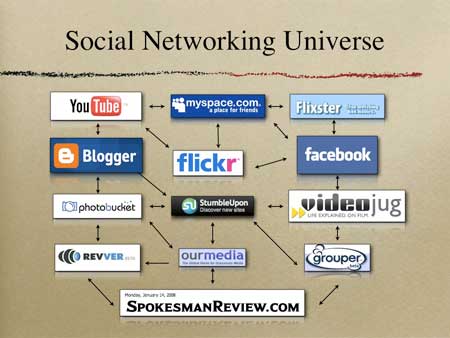Black Monday seems to be striking American newspapers on a daily basis. With almost a thousand journalism jobs lost last week alone, there seems to be a concerted effort by everyone in the industry to reinvent the medium. While noble, it’s sad these changes didn’t take place sooner. But hey, we had a good gig going for the last 150-years, why mess with what works?
It’s strange how the people running newspapers have been talking about changing for most of my 20-year career. Yet, all they’ve really done in that time is tinker under the hood a bit. Now as the revenue crisis deepens by the day, publishers and editors around the country are willing to start listening to their content producers for fresh ideas. The reimagining of our industry, no longer a covenant of the suits, will probably be shaped by those of us who have the most to lose-reporters, photographers, editors and online producers.
Yesterday at my newspaper, The Spokesman-Review, we had our annual come to Jesus meeting. My editor, Steve Smith gave all of us the gloomy news: Revenues are way down, the cost of doing business is way up and cuts need to be made. Luckily, the layoff demon has been held at bay—at least until the next round of dismal revenue projections hit. Smith asked the newsroom to just do what we always do—produce good journalism. He also let the room know that we can’t do things the way we have in the past. I, and pretty much everyone in that deadly quiet meeting got the sense that we are now done talking about change. If we are going to protect our jobs, then we need to find a way to reinvent the newsroom on a completely different multi-platform model. No job, or job title is secure. The message is clear. Change is now baring down on The Spokesman–Review newsroom like a runaway logging truck without brakes.
A few days before the newsroom meeting, editor Smith quietly invited eight of our newest, young journalists into his office. He asked each of them, who basically have no stake in the processes of the past, to suggest ways to streamline the newsroom operation. He wants them to find a way to make it more efficient, thus letting people spend more time on developing quality journalism instead of just shoveling content.
The “Great Eight” as I call them, are meeting daily to share ideas and work up a plan. What they come up with is anybody’s guess. They have been given boundaries with which to operate. No suggestions to stop publishing the print newspaper, no downsizing or upsizing the present newsroom staff. Whatever they come up with, the challenge is for management and older co-workers to really listen to what they have to say. They are the future of our business. If we don’t change fast, they won’t stick around for the sinking of the ship.


